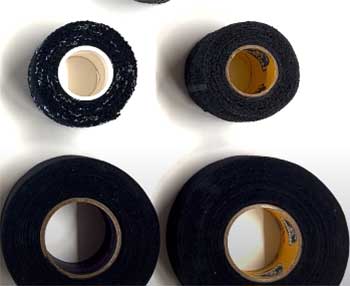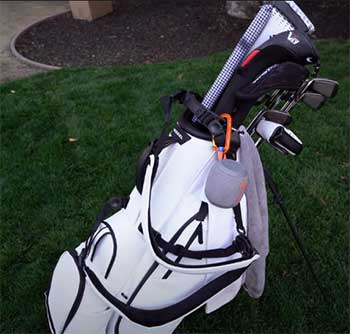Hockey enthusiasts around the globe are well familiar with the quintessential argument that stirs up quite a buzz: the classic Goon Tape and Hockey Tape dispute. This debate goes beyond just the ice rink and permeates the larger realm of sports tape enthusiasts.
Understanding this argument, in all its shades, is essential, whether you’re a hockey player seeking the optimal grip, or a sports gear enthusiast exploring the tape market.
A Brief Comparison Table
| Feature | Goon Tape | Hockey Tape |
| Material | Cloth-based | Cotton-based |
| Adhesion | High | Moderate |
| Durability | High | Moderate |
| Versatility | Primarily used in hockey | Used across multiple sports |
| Availability | Less readily available | Widely available |
| Cost | Generally more expensive | More affordable |
Goon Tape: A Hidden Gem for Hockey Players

Goon tape, relatively unknown outside the hockey community, is a firm favorite among players looking for a perfect balance of durability and stickiness.
Goon tape is a cloth-based tape known for its firm grip and resistance to wear and tear.
The adhesion is so robust that it is frequently used on the blade of hockey sticks to improve puck handling, an advantage that has earned it the affectionate nickname, “the stick’s best friend.”
Pros and Cons of Goon Tape
Pros
- Durability: Goon tape boasts of an impressive lifespan, outliving most regular hockey tapes. The fabric backing ensures it can take a beating and still offer optimal performance.
- Grip: Goon tape provides a superior hold due to its high adhesive content. It facilitates better control of the hockey stick, thereby improving puck handling and control.
Cons
- Availability: Being a niche product, Goon tape is not as readily available as traditional hockey tapes, which might deter some users.
- Cost: Due to its specialty status and superior performance, Goon tape often comes with a higher price tag compared to regular hockey tapes.
Hockey Tape: The Standard Bearer
No conversation about sports tapes is complete without mention of the classic hockey tape. This tape is usually cotton-based, providing excellent grip and durability.
It’s used widely in hockey and across a spectrum of other sports for its versatility.
Pros and Cons of Hockey Tape
Pros
- Versatility: Hockey tape is used for more than just hockey. Its stickiness and flexibility make it ideal for wrapping all kinds of sports gear, including baseball bat handles, lacrosse sticks, and more.
- Availability and Price: Unlike Goon tape, hockey tape is readily available and generally more affordable.
Cons
- Less Durable: Hockey tape is generally less durable than Goon tape. Regular use, especially in intense games, can lead to quicker wear and tear.
- Less Sticky: While the stickiness of hockey tape is sufficient for many uses, it may not be as adhesive as Goon tape, potentially affecting the quality of the grip.
Key Differences Between Goon Tape and Hockey Tape
While Goon and Hockey tapes share a common purpose – to offer enhanced grip and control over sports gear – they do present some stark differences that make each of them unique in their own right.
Understanding these differences is crucial in making an informed choice between the two.
- Material
Goon tape often uses a cloth-based material that gives it its unique, sturdy feel and extra grip. It’s designed to withstand the harsh conditions of an intense hockey game, offering durability that’s hard to match.
On the other hand, hockey tape is generally made of cotton, a material that offers a balance between stickiness and flexibility. While it may not be as durable as Goon tape, its versatility makes it a popular choice across a range of sports.
- Adhesion

The level of adhesion is another distinguishing factor between the two tapes.
Goon tape is known for its strong adhesive property.
Its stickiness is designed to withstand not just the wear and tear of the game, but also the impact of ice, providing a consistent grip throughout its lifespan.
In contrast, hockey tape offers a moderate level of adhesion.
While it provides a good grip, it might not stand up as well as Goon tape to the rigorous conditions of a hockey game.
- Use Cases
Goon tape’s primary use case is in the game of hockey, particularly on the blade of the hockey sticks to enhance puck handling.
Hockey tape, due to its versatility, is used in a variety of sports gear handling. It can be found wrapping the handles of baseball bats, lacrosse sticks, and, of course, hockey gear.
- Cost and Availability
While Goon tape outperforms hockey tape in terms of durability and grip, it often comes with a higher price tag and is not as readily available.
In contrast, hockey tape is generally more affordable and widely available, making it a convenient option for most users.
Goon tape and hockey tape, despite their shared purpose, present different strengths and weaknesses. Goon tape stands out for its superior grip and durability, while hockey tape shines in its versatility, affordability, and easy availability.
When choosing between the two, it’s crucial to consider these differences and align them with your personal needs and preferences.
Choosing between Goon tape and Hockey tape ultimately depends on your specific needs and circumstances. If you prioritize durability and grip over cost, Goon tape might be your best bet.
However, if availability and cost are more significant factors, then hockey tape will suit you better. It’s a classic case of “you get what you pay for”.
Frequently Asked Questions (FAQ)
Goon tape is specifically designed to provide an excellent grip and high durability. It’s a premium product, preferred by hockey players who want a sturdy and lasting tape for their sticks. The point of Goon tape is to enhance the overall playing experience by offering superior control over the hockey stick, thereby improving puck handling and control.
While hockey tape isn’t specifically designed for guns, it has been used as a makeshift solution for enhancing grip on firearm handles. The tape’s cloth-like texture and adhesive backing provide a non-slip surface, which can improve the shooter’s hold. However, it’s essential to note that specialized gun grip tapes are available in the market that might provide better performance and durability than hockey tape.
While hockey tape is a type of sports tape, it’s not synonymous with all sports tape. Sports tape is a broad category encompassing various tapes designed for different applications within sports, such as kinesiology tape, strapping tape, and more. Hockey tape, on the other hand, is specifically designed for hockey gear but is versatile enough to be used across multiple sports for equipment handling purposes.
Yes, you can use athletic tape on a hockey stick. While it might not be as optimal as hockey tape or Goon tape in providing grip and durability, athletic tape can still serve as a decent makeshift solution in a pinch. However, for regular or professional use, opting for a tape specifically designed for hockey gear, like Goon or hockey tape, would offer better results.
The Takeaway
The Goon tape and Hockey tape debate is, in essence, about finding the right balance between performance, cost, and availability. While Goon tape takes the crown in terms of superior grip and durability, hockey tape wins the race in terms of versatility, accessibility, and affordability.
The choice between these two, therefore, hinges on your individual needs and priorities. Whether you’re a professional hockey player, a sports enthusiast, or just someone who loves to keep their gear in top-notch condition, knowing these nuances can go a long way in making an informed decision.

